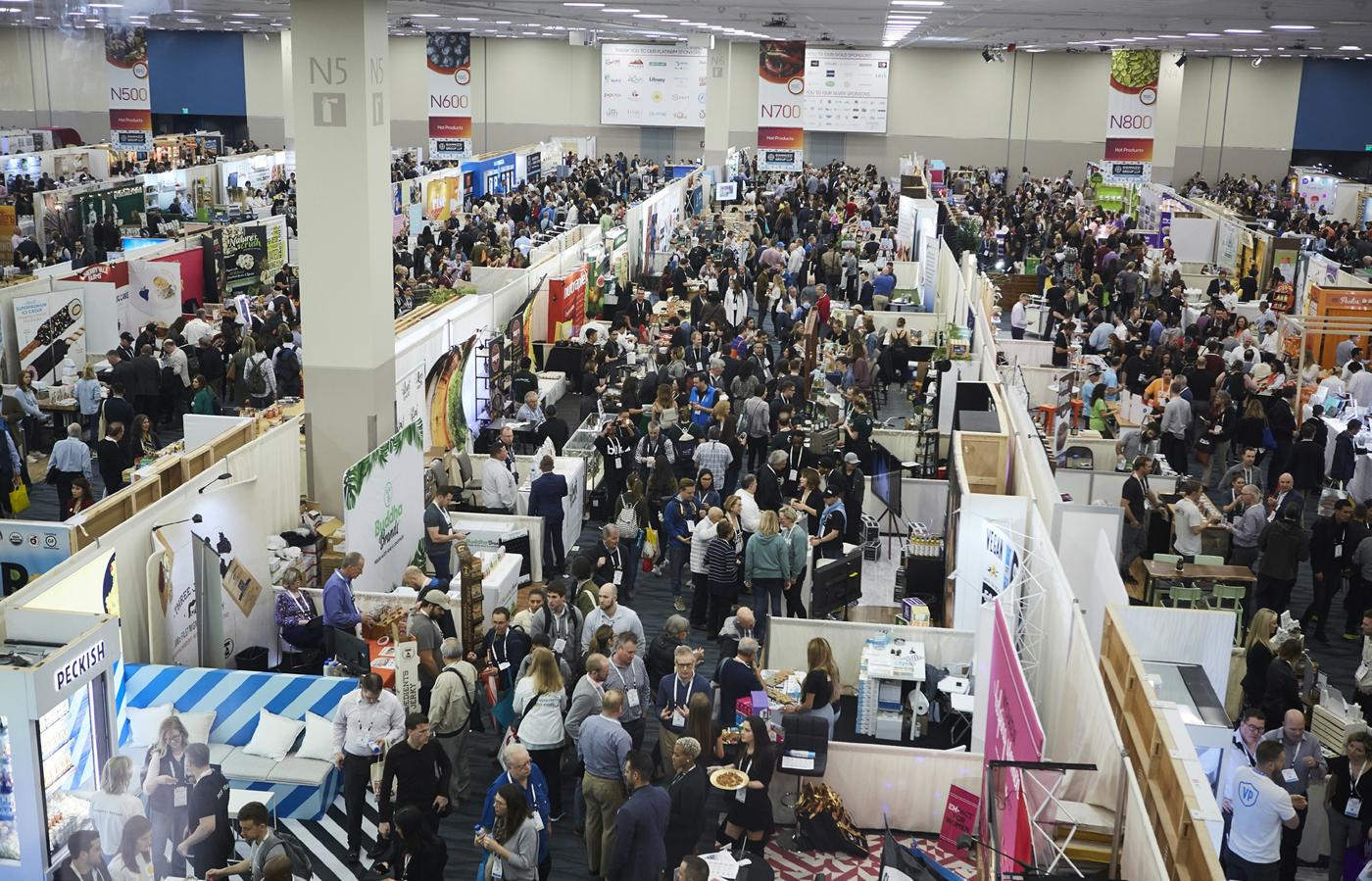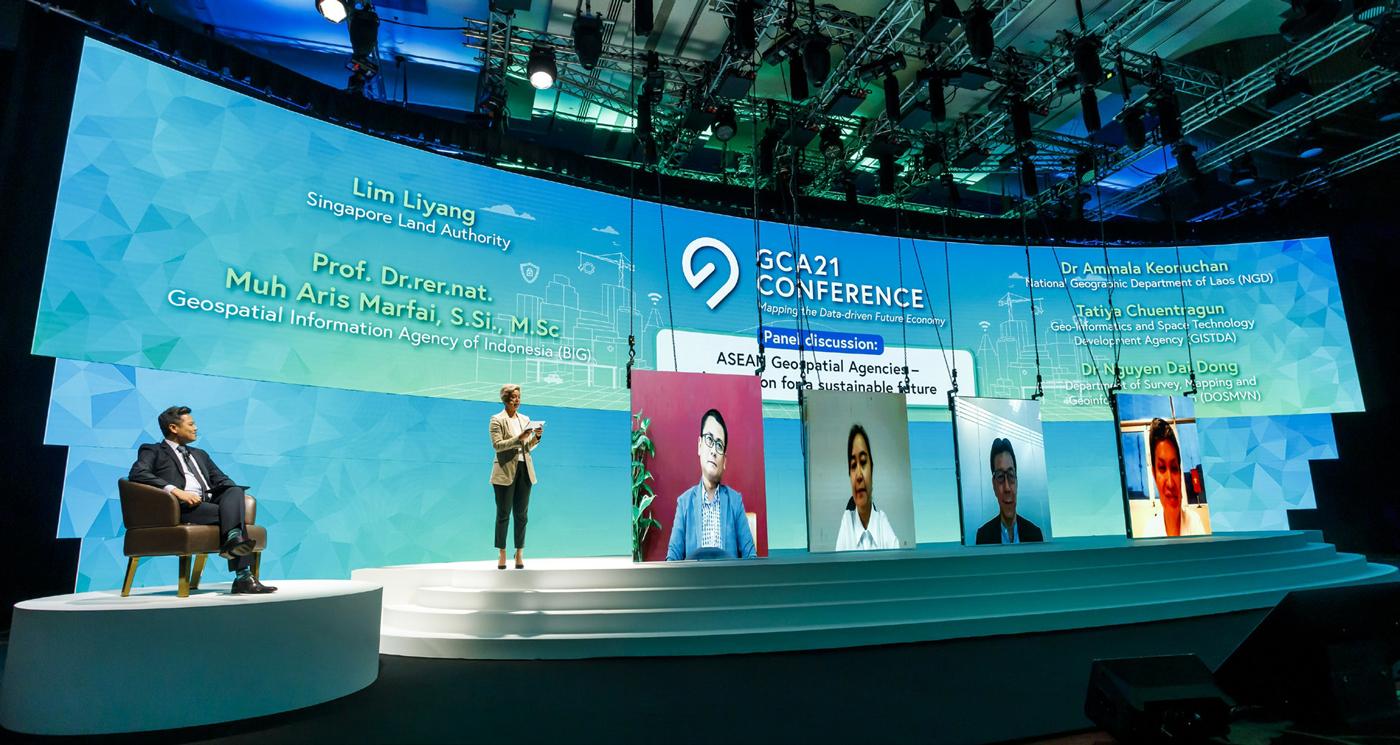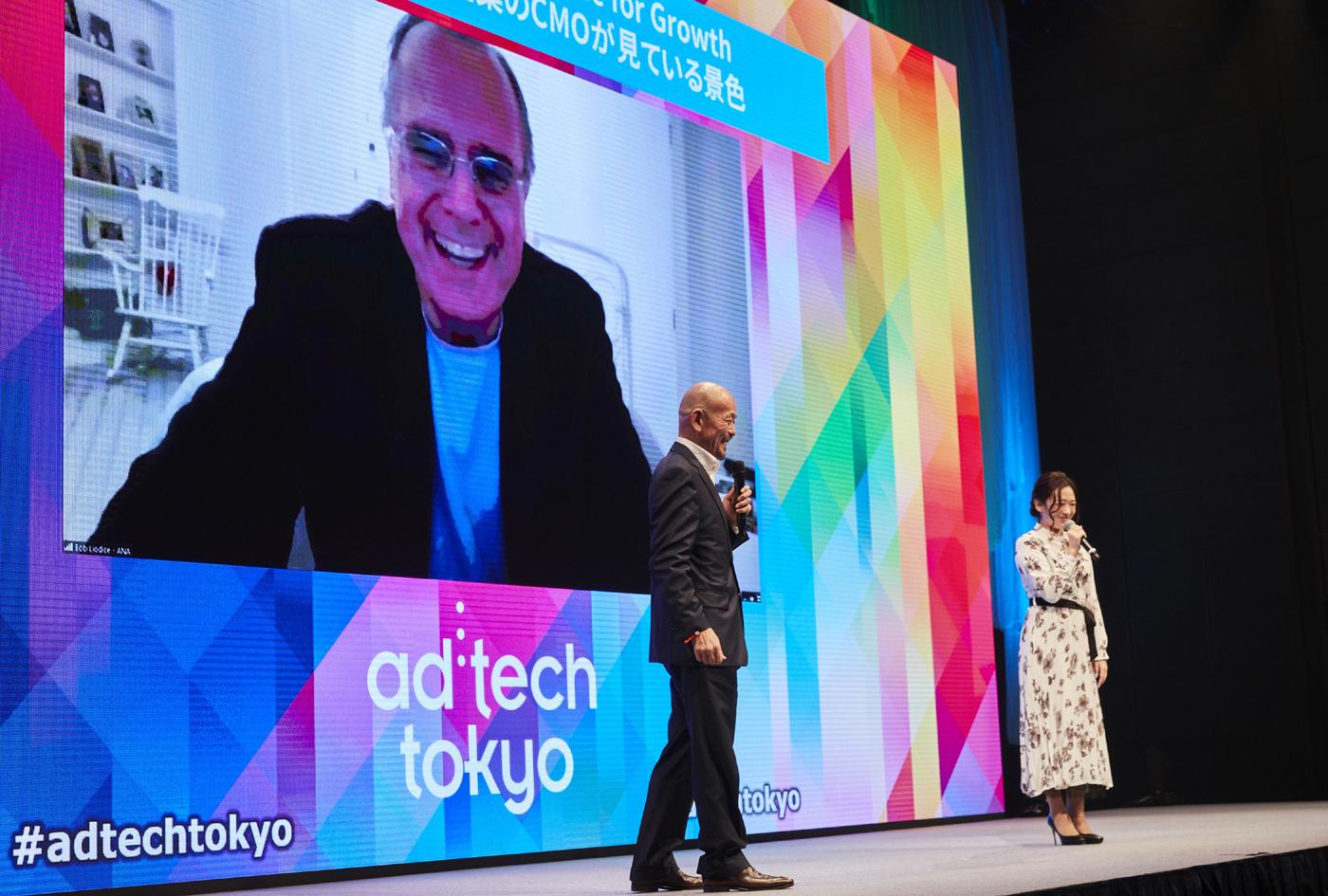复展初体验
苏希玲



据相关调研,大部分会展行业代表和参展参会企业认为“新冠疫情更清楚地表明了线下活动的价值”。不仅国内会展活动逐步恢复,在国际市场,随着各行各业逐步复苏,目前,日本、新加坡、美国、澳大利亚等多个国家的实体会展活动均已陆续启动。那么,经历过一年多的暂停期,疫后办展,各国会展企业有何新感受?与以前相比,展会规模、参展参观者的反馈是否有新的变化?疫后办展在运营层面最大的挑战是什么?展览公司如何合理布局,应对未来?
围绕以上问题,本期专题将采访目前已经复展的美国、日本、新加坡等地的会展主办方代表,听他们分享复展的心得体会。他们普遍认为,疫后展会虽然在数量上可能不及从前,但高质量的专业观众让展会反而更加成效突出;数字化技术的使用,则更是为行业的解冻带来了暖流。
Embark on the recovery route of exhibitions
Reporter/Celion Su
According to relevant research, most exhibition industry professionals and exhibition participants believe that “COVID-19 has demonstrated more clearly the value of offline activities”. So, after more than a year of suspension, what are the different feelings of exhibition enterprises in various countries Are there any new changes in the scale of the exhibition and the feedback from visitors What are the biggest challenges in the operation of post-epidemic exhibition How will exhibition organizers make reasonable layout to embrace the future
Around the above issues, four representatives from leading exhibition organizers from the United States, Japan, Singapore where physical or hybrid shows have been gradually restored have been invited to share their experiences and views. They generally believe that although the scale of post epidemic exhibitions may not be as big as before, but the high-quality trade visitors have made the exhibition more effective. In addition, the use of digital technologies have also brought warm flows for the thawing of the industry.
目前线下展会的基本情况如何?
Ted Wirth:我们与展会所在场馆通力合作,为展商和买家之间的贸易成交营造安全的环境。相应的措施包括:疫苗接种证明、核酸检测、无接触展会登记、设置卫生服务站和安排现场监测员监督人们佩戴口罩等。我们发现,客户非常渴望线下展会重新举办,并非常乐意采取任何必要的举措来配合展会重新举办。
Yuko Furuichi:去年11月,我们以混合形式举办了数字营销展——东京全球数字营销峰会。由于要遵守政府的几项要求,我们仅邀请了最优质的买家来到展会现场。政府的防疫要求主要包括:展会观众数量不得超过5000人、场馆空间占用率不得超过50%,以及现场禁止饮食。通过这些禁令,参展参会者可以专注于面对面交流,获得更好的参会体验。同时,我们通过线上直播,增加了很多新的观众。
Christopher McCuin:在今年3月24-25日,我们举办的2021年新加坡国际测绘地理信息展览会在滨海湾金沙会展中心举办。这是新加坡在2021年的首个大型混合型试点活动,一共吸引了来自55个国家的近1200名代表参加。线下展会包含两天的丰富演讲、大会、圆桌会等,另有700多名来自全球的行业和媒体代表齐聚线上。新加坡外交部和負责“智能城市计划”的部长官员为展会揭幕。
在疫情下,本次大会采用多项创新举措保障参与者的安全和健康,包括:使用蓝牙加密狗对参会者的地理位置进行定位,并监测与其他参会者交谈的时长;将大宴会厅改造成“展会洽谈区”,尽量减少参会者之间的扎堆;使用可举办二对二会议的小型会议室、有机玻璃分隔罩、洗手液等。此外,本次大会两天都采取了现场核酸快速检测措施。
Nan Walsh:在过去几个月中,我们已经逐步平稳地在北美恢复举办展会。这证明了客户持续认可面对面展会的价值,并且十分渴望线下展会的回归。目前,我们在北美已经恢复举办的线下展会涵盖休闲游艇、时尚、航空等多个行业领域。而我们听到的最多的反馈就是今年高质量的专业观众为展商带来了很高的价值。与此同时,我们也为暂时无法参加线下展的客户组织同期的线上展会,并提升了自身数据处理能力,在展前和展后都为客户带来更好的贸易对接效果。
展会展商和买家的反馈如何?
Ted Wirth:虽然很多国际展商都邀请当地机构为自己在展会现场代为参展,但疫后展会一个主要的趋势就是国际性的展会变得更加以区域性为主了。同时,观众的质量比数量更加重要变得更加明显。实际上,展商非常愿意在展会上与高质量的买家接触更长的时间。
Yuko Furuichi:在2019年,我们的线下展一共有 71家展商、28家赞助商,论坛总人数为1804名。在2020年,混合式展会我们没有参展商,但一共有40家赞助商,论坛人数为6397名(增加了255%),而论坛满意度也很高,尤其是那些应参会者要求而开设的论坛。
Christopher McCuin:今年我们得到了普遍的积极反馈。比如“本次大会显示了我们行业在当前艰难时期的韧性,并为本地以及区域地理信息产业的发展带来了希望。”“感谢主办方举办了今年新加坡的第一个大规模混合性展会并大获成功。” 2022年展会将在3月以更大规模举办。
Nan Walsh:今年,我们的策略是质高于量。因此,我们邀请到真正渴望与展商交流的、期盼商业复苏的观众群体。虽然今年展会的规模有所缩减,但我们看到现场的成交与疫前的展会一样好。客户对会展平台的价值和重要性给予了很高的评价,各行各业复苏的需求很大。
疫情之后举办线下展有哪些主要挑战?
Ted Wirth:最大的挑战在于重新树立客户的信心。疫后办展,事情就不再只是跟展会本身有关——客户对坐飞机、坐出租车、住酒店和在餐馆吃饭等环节都必须要感到安全。但好消息是,疫情期间的锁闭局面让人们的参展需求空前高涨。如果展会主办方能采取必要的措施,客商将会重新蜂拥而至。
Yuko Furuichi:多样化的参与方式非常重要。所有的主办方都必须设置多样化的参会方式,让观众可以按需参加自己喜欢的活动。当然,人们都更喜欢面对面的活动,因为更有成效。但这对于主办方的业务稳定性也有风险——除非展会仅邀请特定人员线下参与,否则,主办方必须为参会者提供线上线下方式。
Christopher McCuin:随着我们逐步走出全球疫情(希望如此),我认为,如果能妥善应对如下挑战,我们将能够举办更加具有行业关联性的展会,并为参展参会者提供更高的投资回报率。
政府及商业层面——今天,各方合作的必要性超过以往任何时候。我们从与新加坡旅游局、新加坡土地管理局等政府机构日渐深化的合作中深深体会到这一点。各方都要继续通力合作,通过政企之间的无缝配合,以展会推动各行各业的复苏。
客户信心——会展活动的所有利益相关者必须相信,从启程出发的那一刻起,他们的整个参会流程都是安全的。同时,他们也需要坚信他们参加展会不仅对自身业务有益,而且对他们所在的行业也有益。
無接触——这将成为展会运营各个环节的基本规范,包括从参会登记、交换名片到产品展示等。
商务预约——这比以往任何时候都重要。
活动全程的健康安全——这将成为新常态。佩戴口罩、消毒洗手、保持社交距离等措施可能持续相当一段时间。
优质内容——如今网络上有大量的免费内容,所以所有的展会都需要不断创新,为买家和展商提供“干货”和“独特氛围”等,才能吸引他们持续参加展会并参与互动。
Nan Walsh:在美国,在很短时间内,我们在疫苗接种方面已经取得了很大的进展,但并不是每个人都已经对参加线下活动感到放心。英富曼是跨国公司,我们的很多展会原来都是吸引全球观众,但如今的差旅限制使得这变得非常困难。此外,今年很多企业仍处于复苏阶段,很多公司收紧了预算,即便一些忠实的客户也无法前来参加我们的线下展。在此背景下,数字化手段将成为我们重要的长期发展策略,为客户提供参展机会,弥补疫情带来的鸿沟。
如何为未来做好准备?
Ted Wirth:在当前,有很多关于数字化活动对于实体展会带来巨大影响方面的探讨。我认为,数字化/虚拟产品能提升线下活动的体验,但不能取而代之。同时,我们通过线上活动接触到了很多新客户。疫情倒逼我们加速推进市场化进程,这证明是一件好事。通过此,我们可以触及很多无法参加线下展的客户,扩大了展会的受众。
Yuko Furuichi:我们正在为数字化转型做准备,包括学习线上直播技巧和混合型展会推广策略等。由于目前混合式活动已成重要趋势,线上技术和相关策略将成为开发新项目过程中重要的技巧。这是一个试错的过程,但正因为这些尝试,高美爱博日本子公司在疫情期间闭锁环境下仍能盈利。我认为,数字化转型是未来展览企业成功的关键。
Christopher McCuin:在蒙哥马利亚洲公司,所有人都对未来兴奋不已。我们看到,公司旗下展会所在的行业企业都在寻找新的销售线索和贸易机会,我们可以在这些方面提供良好助力。同时,各展会主办方将更加愿意携手合作、联合办展,以及尝试其他的新机会,在此过程中,我们也可以将展商和观众联结得更加紧密。
当前,在全球各地,很多主办方都在带着惊叹观望着中国的展会主办方如何在疫情下将参展和观展都十分火热的消费展组织得如此成功。我们希望,随着疫情逐步得到有效防控,全球各地的展会都能逐步恢复到疫情之前的水平,通过领先的展会平台将商业社群汇聚起来。
Nan Walsh:我认为展览行业有着极强的恢复能力。我几乎整个职业生涯都在展览行业,深深了解客户对我们平台价值的高度认可。疫情带来了很多的阻隔,人们迫切地想要回到面对面活动中来,所以我认为我们的行业一定会复苏,而且是很快复苏。另一方面,疫情也使得我们更快地认识到数字化技术的用处。通过相关线上技术,我们可以举办混合展或单独的数字化方案,为客户群体全年都带来更好的对接成效和获得感。
How were the situation of your re-opened exhibition projects
Ted Wirth: We are working with venues to provide a safe environment for our exhibitors and attendees to do business. Steps include vaccination verification, testing, touchless registration, sanitizing stations and staff monitoring the show floor to remind people to wear their mask. We have found that our customers desperately want the event to take place and are very willing to take any extra steps necessary to make it happen.
Yuko Furuichi: In November 2020, we re-opened our digital marketing show “ad:tech tokyo” as a hybrid style. We have been subject to 3 main regulations from the government, so we only invited premium pass attendees to the venue. The regulations are: 1. audience number has to be under 5,000; 2. less than 50% capacity of the venue; 3. No food and drinks. Thanks to this exclusive style, we could focus on face to face networking best experience. At the same time, we succeeded in extending our reach of the audience, due to online streaming.
Christopher McCuin: On 24th & 25th March 2021, Singapore Geo Connect Asia 2021 (GCA 2021) took place at Sands Expo & Convention Centre. It was Singapores first large-scale pilot hybrid event in 2021, attracted close to 1,200 from 55 countries. In-person attendees were treated to two eventful days of keynote speeches, plenary sessions, roundtables discussions, and more, while about 700 industry professionals and media from across the globe enjoyed the virtual trade event experience. The event was officially opened by the government officials such as Singapore Minister for Foreign Affairs& Minister in-charge of Smart Nation Initiative and more.
GCA 2021 adopted a multitude of innovations to ensure the safety and well-being of in-person attendees in light of the pandemic. Including the use of the dongle which tracked attendees location and duration of interaction with other attendees; Geo Suites where ballrooms were converted into “exhibition meeting pods” that assumed the role of a typical trade show floor as the main mode of interaction and helped to minimise intermingling between cohorts of attendees; Meeting Pods that allowed 2-to-2 business meetings to take place with the safety of a plexiglass divider as well as hand sanitisers and cleaning supplies. At GCA 2021, Antigen Rapid Tests (ART) were administered onsite for both days of the event. over the past few months, which has confirmed to us the continued value of, and desire for, face-to-face events. We have re-opened our show floor for industries spanning from recreational boating to fashion to aviation, and the most consistent piece of feedback we receive is that our events this year are creating high-value connections because our focus has been on quality attendance.
While we are thrilled to be driving people back to the show floor who are eager to connect and do business, we are also creating digital opportunities for those members of our communities who arent able or ready to return to in-person events, often in parallel with our live events. We are also ramping up our digital and data capabilities to create year-round marketplaces, and provide better quality matchmaking on and off the show floor.
How were the events scale such as number of exhibitors and visitors What was the feedback for the shows
Ted Wirth: Shows that had an international portion are now more regional, although many international exhibitors have secured a local representative to provide them a presence at the show. As always, the quality of the attendees trumps the quantity of attendees. In fact, the ability to spend more time with a highly qualified buyer has been well received by all.
Yuko Furuichi: In 2019, the physical event welcomed 71 exhibitors and 28 sponsors, and the seminar attendees was 1,804. In 2020, the hybrid event did not have exhibitors, but we welcomed 40 sponsors and 6,397 seminar attendees. Seminar attendees increased by 255%. Moreover, we received high satisfaction in terms of seminars, especially for on demand seminars.
Christopher McCuin: We received general positive feedback from our exhibitors. Such as “The event has shown our resilience in these tough times and represents our hope and optimism in the local and regional geospatial industry.” “Congratulations to Montgomery Asia for organising the first large-scale hybrid event of the year in Singapore and making it a huge success.” “Geo Connect Asia will return next year in March 2022 as an even bigger affair.”
Nan Walsh: Our focus is on quality over quantity this year—we continue to host well-attended events. The attendees who are returning to the show floor are eager to get back to business and to re-connect with the community, so even at our smaller shows, we are seeing equitable business to years prior. The testimonials we have received from customers this year are passionate about the value our platforms provide, and the importance of these platforms, particularly this year as so many industries are desperate to return to business.
What are the major challenges in organizing physical events after the pandemic
Ted Wirth: The biggest challenge in organizing physical events is reestablishing customer confidence. It is not just the event itself: customers must feel safe to fly on a plane, take a cab, stay at a hotel, and eat at restaurants. The good news is that living through a lockdown has created a pent-up demand to attend shows. If we can take the necessary steps to show that it is safe to do so, people will come back in multitude.
Yuko Furuichi: A diversity for participation style will be critical. All organizers need to prepare multiple ways for their attendees to join their events. There is no doubt that people prefer face to face networking since its more effective. However, it also contains a risk. Unless the show is conducted in an exclusive invitation style, we have to prepare an online way for the attendees to join the show, as well as in the real venue.
Christopher McCuin: As we slowly (and hopefully) come out of this global pandemic, I see a few challenges which if approached correctly could mean more focused trade events with more ROI for participants:
Government & Commercial – The need for us all to work closer together than ever before. We have already experienced this through our ever-growing relationship with the Singapore Tourist Board, Singapore Land Authority and others. These relationships will continue for everyone moving forward and we will work together to to ensure that business events do help to establish and build the industries to recover.
Customer confidence – All stakeholders will need to truly believe that they will be safe and secure throughout the experience before they even leave their house or office. They will need confidence that the event they are attending will be truly beneficial to themselves and the business they represent. Contactless – This will become the norm across all points of exhibitions from registration to business cards to products. We will all need to innovative for this “new normal”. Pre-arranged business meetings – More essential than ever. Health, Safety throughout – This will become the norm. Face masks, hand sanitisers, check in QR codes, social distancing and controlled hall capacities are likely to remain for some time. Content – With so much free content available online, all our shows need to be innovative and have that ‘secret ingredient and‘vibe that excite our visitors and exhibitor to attend, participate and truly engage.
Nan Walsh: In the U.S. weve made such significant vaccine progress in such a short period of time, but not everyone is comfortable returning to in-person experiences yet. We also operate a global business and many of our shows attract a global audience, which has been difficult as travel restrictions persevere. And, many corporate budgets remain tight during this recovery year, making it difficult for some of our loyal customers to travel to our physical events. Digital engagement opportunities will be an important piece of our strategy long-term, but they are especially important this year so that were able to bridge the gap from one side of the pandemic to the next.
How to prepare for the future of the events industry
Ted Wirth: There is a lot of talk of digital and virtual events having a large impact on physical events. We feel digital and virtual products can enhance a physical event, but they cannot replace it. Indeed, we have found many of our digital customers are new to us. The pandemic may have forced us into digital products faster than planned which has proven to be a good thing. It has connected us to many customers who were not able to attend in person, which has expanded the reach of our events.
Yuko Furuichi: We prepare for DX ( digital transformation ), such as online streaming techniques and marketing PR strategy for hybrid shows. Since hybrid style becomes critical, digital skills and strategy is going to be a key fact for event nurturing. It has been trial and error activities but thanks to that, Comexposium Japan team kept making profit under lockdown situations. I believe DX is going to be a key.
Christopher McCuin: All of us at Montgomery Asia are excited for the future. The industries that we work within are all hunting for new sales, new leads and new connections and we can help with all of these. Meanwhile, organisers are likely to be more open to partnerships, co-locates and other options as we bring closely linked industries and audiences together.
At this stage, many are watching in awe of how events are fantastically well organised within China for the huge attendances for the trade and consumers events. We hope to see all shows to regain to these levels of participations once again as the global community continue to navigate our way out of this pandemic, bringing our business communities together through world leading events.
Nan Walsh: I see the events industry as incredibly resilient. Ive worked in this industry for nearly all of my career, and I know the value communities place on our platforms. Weve been in a crisis of isolation and people are eager to return to in-person experiences, so I think the industry will bounce back, and soon. On the flip side, the pandemic has also made us more aware of the digital solutions available to us, which I think actually enriches our in-person experience, allowing us to widen our reach with hybrid and standalone digital opportunities which extend our audience, and new year-round digital experiences that keep our community even more connected and fulfilled.

